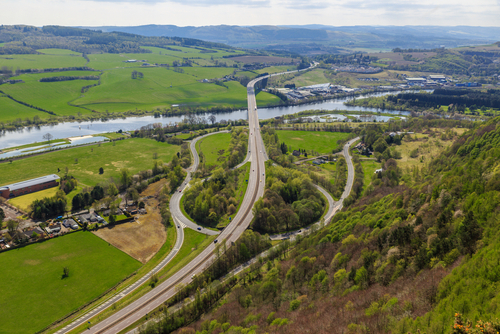
A new report from TRIP, a national transportation research non-profit, has found that America’s rural transportation system has significant deficiencies, high crash rates, and inadequate connectivity and capacity.
According to the report, “Rural Connections: Examining the Safety, Connectivity, Condition and Funding Needs of America’s Rural Roads & Bridges,” U.S. rural roads and bridges are facing a $180 billion backlog in funding for needed repairs and improvements.
The report looked at the percentage of rural roads in poor condition, the percentage of rural bridges deemed deficient, rural traffic fatality rates, and the number of rural traffic fatalities. Researchers found that the rural transportation system faces a number of challenges, including inadequate capacity; inadequate connectivity; and an inability to support freight travel.
Among its findings were that traffic crashes and fatalities on rural non-Interstate roads are twice what they are on all other roads. In 2020, non-Interstate rural roads had a traffic fatality rate of 2.17 deaths for every 100 million vehicle miles traveled (VMT), compared to 1.09 death per VMT on all other roads. Rural non-Interstate roads carried 23 percent of all vehicle travel in 2020 but had 38 percent of all traffic deaths. Researchers said the higher fatality rate can be attributed to rural road conditions like narrower lanes, limited shoulders, sharper curves, exposed hazards, and pavement drop-offs.
“Roadway safety countermeasures like median cable barriers, rumble strips, and guardrails are among the most cost-effective ways to prevent traffic crashes and to save lives when they do happen,” said Jake Nelson, AAA traffic safety advocacy & research director. “At a time when our nation is recording record high traffic deaths, transportation investments ought to prioritize curbing traffic injuries where we can make the greatest impact—rural roads.”
The report found that 12 percent of America’s rural roads are rated in poor condition, while 19 percent are in mediocre condition. Additionally, 8 percent of the country’s rural bridges are rated in poor/structurally deficient condition. Bridges rated poor or structurally deficient are often posted for lower weight or closed to traffic, restricting or redirecting large vehicles, including agricultural equipment, commercial trucks, school buses, and emergency service vehicles.
Researchers said rural Americans are more reliant on the quality of their transportation system, with vehicle travel in rural communities averaging approximately 50 percent higher than in urban communities.
The report also found that rural roads, highways, and bridges face a $180 billion backlog in needed repairs and improvements, including $109 billion in rural road and highway rehabilitation, $35 billion for rural bridge rehabilitation, and $36 billion for rural roadway enhancements.
The Bipartisan Infrastructure Law (BIL) passed in November 2021 will provide $454 billion over five years to improve America’s transportation infrastructure, including $2 billion for the Rural Surface Transportation Grant Program that supports improving and expanding surface transportation infrastructure in rural areas.